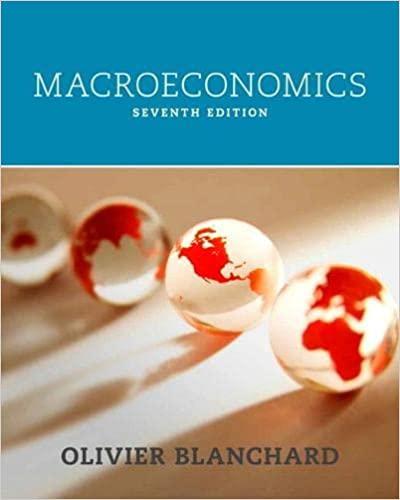This question explores how an increase in demand for U.S. assets may have slowed the depreciation of
Question:
This question explores how an increase in demand for U.S. assets may have slowed the depreciation of the dollar that many economists believe is warranted by the large U.S. trade deficit and the need to stimulate the demand for domestic goods after the crisis. Here, we modify the IS-LM-UIP framework to analyze the effects of an increase in demand for U.S. assets. Write the modified uncovered interest parity condition as
\[
\left(1+i_{t}ight)=\left(1+i_{t}^{*}ight)\left(E_{t} / E_{t+1}^{e}ight)-x
\]
where the parameter \(x\) represents factors affecting the relative demand for domestic assets. An increase in \(x\) means that investors are willing to hold domestic assets at a lower interest rate (given the foreign interest rate and the current and expected exchange rates).
a. Solve the UIP condition for the current exchange rate, \(E_{t}\).
b. Substitute the result from part
(a) in the IS curve and construct the UIP diagram. As in the text, you may assume that \(P\) and \(P^{*}\) are constant and equal to one.
c. Suppose that as a result of a large trade deficit in the domestic economy, financial market participants believe that the domestic currency must depreciate in the future. Therefore, the expected exchange rate, \(E_{t+1}^{e}\), decreases. Show the effect of the decrease in the expected exchange rate in the IS-LM-UIP diagram. What are the effects on the exchange rate and the trade balance? (Hint: In analyzing the effect on the trade balance, remember why the IS curve shifted in the first place.)
d. Now suppose that the relative demand for domestic assets, \(x\), increases. As a benchmark, suppose that the increase in \(x\) is exactly enough to return the IS curve to its original position, before the decrease in the expected exchange rate. Show the combined effects of the decrease in \(E_{t+1}^{e}\) and the increase in \(x\) in your IS-LM-UIP diagram. What are the ultimate effects on the exchange rate and the trade balance?
e. Based on your analysis, is it possible that an increase in demand for U.S. assets could prevent the dollar from depreciating? Is it possible that an increase in demand for U.S. assets could worsen the U.S. trade balance? Explain your answers.
Step by Step Answer:






